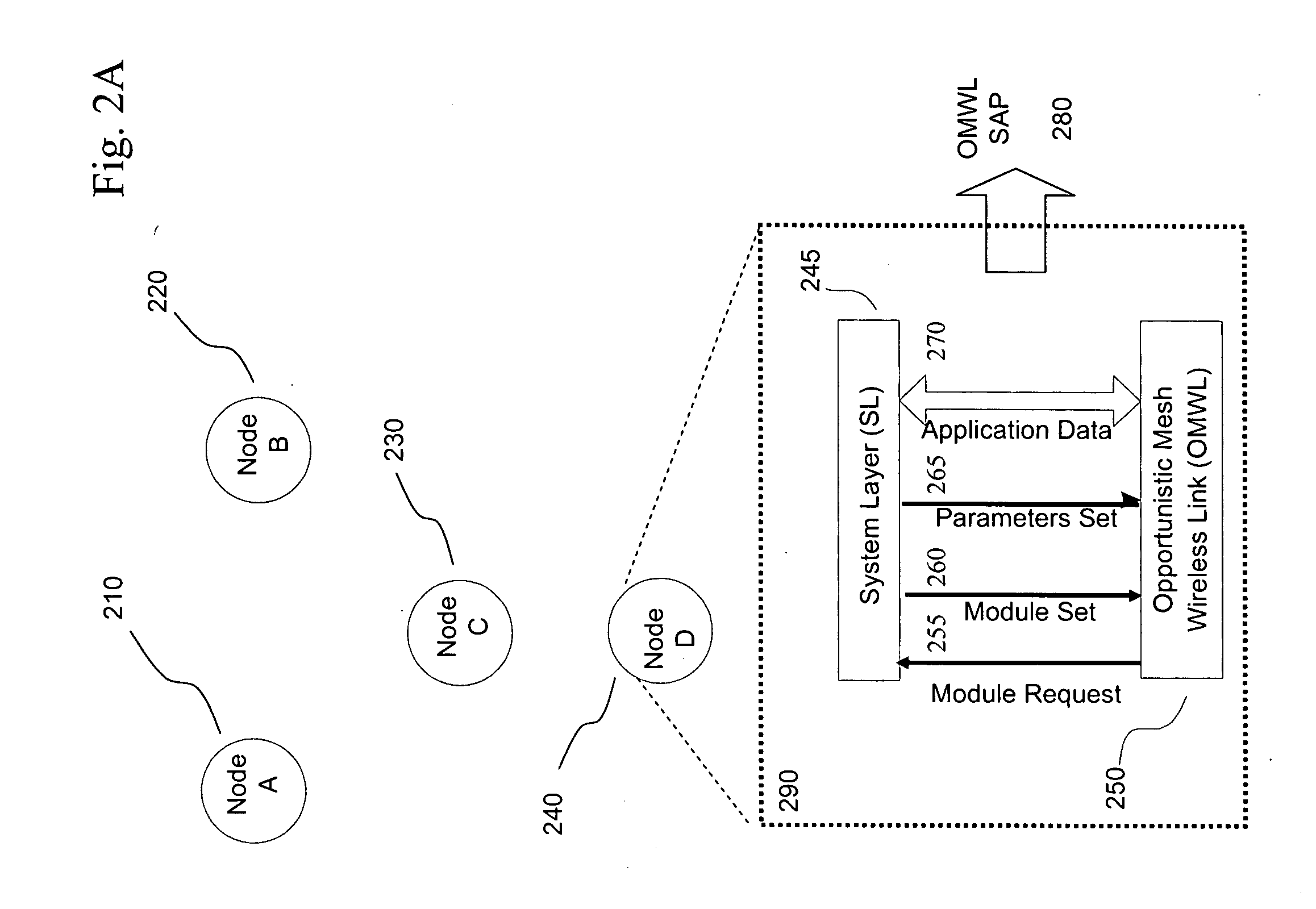Opportunistic wireless mesh network methods
a wireless mesh network and wireless mesh technology, applied in the field of wireless mesh network methods, can solve the problems of inability to handle the randomness of large-scale wireless mesh network with lightweight nodes, inability to further change technologies, and difficulty in implementation, so as to achieve the effect of reducing overhead and improving performan
- Summary
- Abstract
- Description
- Claims
- Application Information
AI Technical Summary
Benefits of technology
Problems solved by technology
Method used
Image
Examples
Embodiment Construction
[0070]FIG. 1 illustrates a prior art example of wireless mesh networking by use of a network topology graph 100. Shown are wireless links 161 through 165, which connect four wireless network nodes, being Node A 110, Node B 120, Node C 130, and Node D 140, all of which are within acceptable transmission range of each other. This combination of wireless links (161 to 165) and nodes (110 to 140) forms a network topology graph 100. By adopting the OSI model, the networking architecture is divided into multiple hierarchical layers, shown in 145. In particular, the Physical Layer 155 transforms the digital bits into wireless signals, and vice versa. The Medium Access Control (MAC) layer 154 sets up virtual wired links over wireless medium, by means of interference control. The Link Logic Control (LLC) layer 153 performs some additional functionalities of the link layer, including multiplexing and demultiplexing protocols using the MAC layer. The Network Layer 152 of every node acts as a r...
PUM
 Login to View More
Login to View More Abstract
Description
Claims
Application Information
 Login to View More
Login to View More - R&D
- Intellectual Property
- Life Sciences
- Materials
- Tech Scout
- Unparalleled Data Quality
- Higher Quality Content
- 60% Fewer Hallucinations
Browse by: Latest US Patents, China's latest patents, Technical Efficacy Thesaurus, Application Domain, Technology Topic, Popular Technical Reports.
© 2025 PatSnap. All rights reserved.Legal|Privacy policy|Modern Slavery Act Transparency Statement|Sitemap|About US| Contact US: help@patsnap.com



